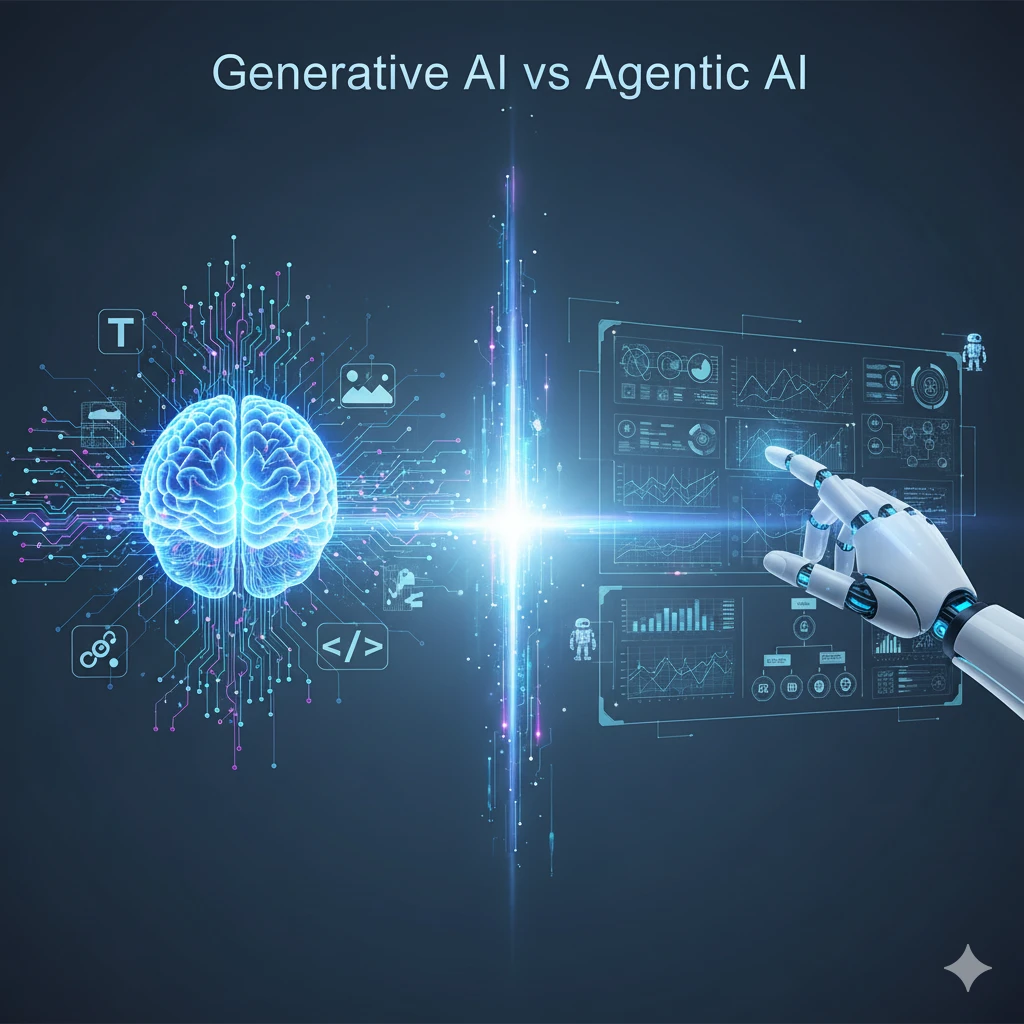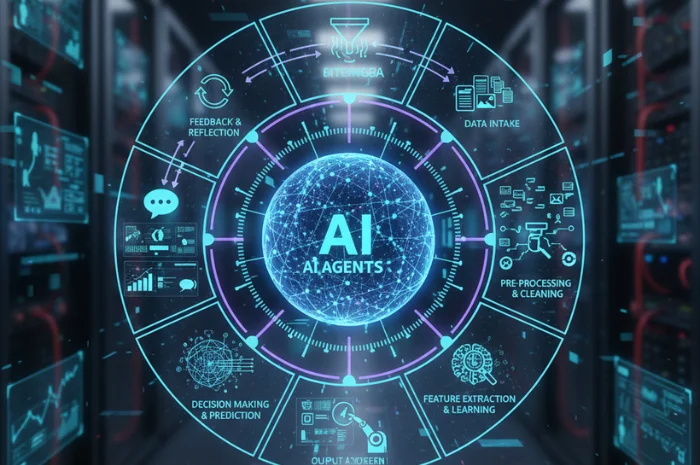If you work with AI tools, you’ve likely used both, though you may not have called them by name. You’ve seen Generative AI tools drafting reports, writing code, or designing campaigns. And lately, you’ve watched Agentic AI systems quietly take over the next steps: scheduling tasks, connecting to APIs, updating dashboards, even looping back for feedback.
At first glance, they seem like versions of the same thing, one smart model doing different tricks. But they reflect two distinct stages of artificial intelligence.
- Generative AI focuses on producing content or insight.
- Agentic AI focuses on achieving outcomes.
The full comparison of Generative AI vs Agentic AI matters now because the boundary between the two is fading fast. Many tools you already use mix both, moving from “create” to “decide and do” in a single flow.
Let’s unpack their core differences, how they work together, and what that means for anyone planning to take Agentic or Generative AI development services.
What is Generative AI?
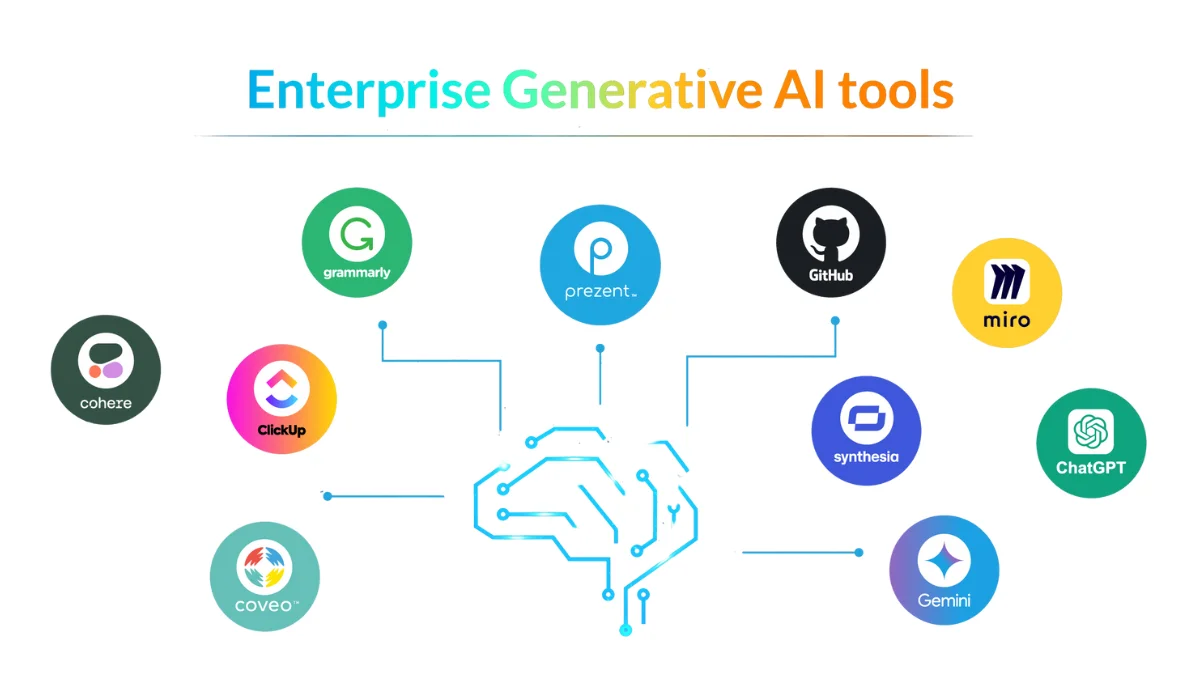
Generative AI is what most people think of when they picture artificial intelligence today, tools that can write, design, code, or compose from just a short prompt. They don’t copy existing material; they learn patterns from huge amounts of data and then use that knowledge to create something new.
Ask ChatGPT to draft a summary or DALL·E to create a logo, and what you get isn’t pulled from a stored answer. The model predicts what fits next based on context, the next word, the next pixel, the next line of code. It’s basically pattern recognition at scale, turned into creativity.
Most of these systems run on transformer-based models, the same architecture that helps them understand how words or images relate to each other. That’s why they sound fluent and make the results feel surprisingly human.
Popular examples of generative AI include ChatGPT, Claude, Gemini, Synthesia, and GitHub Copilot. Each focuses on a different type of output but follows the same principle: learn from data, then generate something new.
Still, generative AI works within limits. It reacts to prompts but doesn’t decide what to do next. Once the output is ready, it stops. Turning that intelligence into action, that’s the next layer of progress.
Meaning of Agentic AI
Agentic AI takes the abilities of generative models and gives them direction. Instead of waiting for a prompt, these systems can plan steps, take action, and adjust based on what happens next. They don’t just generate ideas or content, they get things done.
Think of it as adding a decision-making layer on top of a generative core. The model still uses language or data understanding, but now it can:
- Remember context from past interactions,
- Use external tools or APIs,
- Monitor results, and
- Choose what to do next without constant input.
For example, generative AI can write an email and an agentic AI can also do the same but it can also, check the recipient list, send it through the right platform, and follow up if there’s no reply. It can run workflows, not just produce pieces of them.
Technically, agentic systems combine a few parts: a large language model for reasoning, a planning module for breaking goals into steps, a memory layer to retain context, and connectors to interact with data or applications.
Agentic AI examples like AutoGPT, CrewAI, LangGraph, and in enterprise tools such as Microsoft Copilot use generative intelligence as the brain, and add memory, logic, and execution to make it operational.
This shift is what’s pushing AI from assisting people to collaborating with them, handling not only creation, but coordination and completion.
What is the Difference Between Generative AI and Agentic AI
Generative and agentic AI share the same roots but serve different purposes. One is built to create, the other to act. You can think of them as two layers of capability: generative AI provides the ideas, and agentic AI turns those ideas into outcomes.
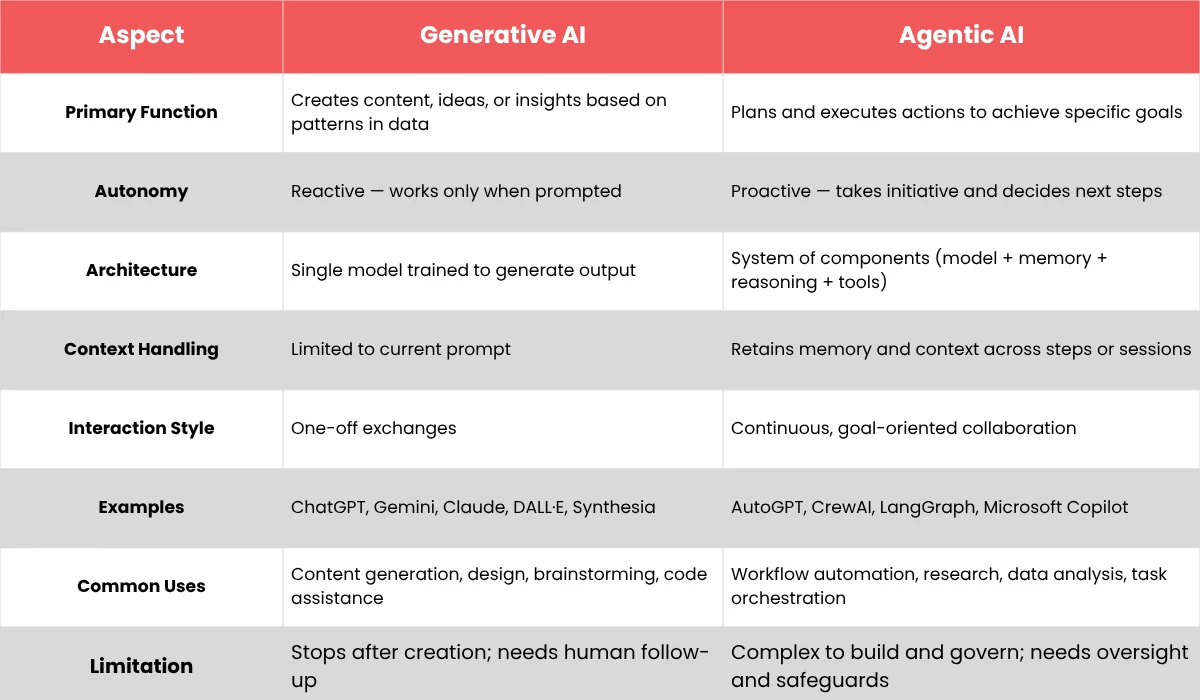
Here’s how they differ in key areas:
In short, generative AI is excellent at producing knowledge, while agentic AI is built for applying it. The first turns data into expression; the second turns intelligence into execution.
Most modern systems blend the two where a generative core produces outputs and an agentic layer manages how those outputs are used. Together, they move AI from single interactions to continuous collaboration.
Also Read:Generative AI vs LLM
Is AI Agent Same as Agentic AI?
No. Agentic AI is the broader concept that refers to AI systems designed with autonomy, reasoning, and the ability to act toward goals. An AI agent is one instance or implementation of that concept, a specific application that performs defined tasks within the agentic framework.
In short: all AI agents are part of agentic AI, but not all agentic AI systems are limited to a single agent.
To understand the difference between generative AI, agentic AI, and AI agents, check these layers.
- Generative AI Creates. It produces text, code, or visuals based on learned patterns. Great for ideation, communication, and content creation , but it stops at output.
Example: Writing a blog draft or designing a logo. - Agentic AI thinks and acts. It adds reasoning, planning, and autonomy on top of generative models. It decides what to do next.
Example: An AI that generates marketing copy, analyzes engagement, and schedules the next post. - AI Agents Execute. These are specific implementations of agentic AI built for defined roles like a sales agent, research agent, or data agent, each operating within clear goals and guardrails.
Example: A customer support agent that drafts replies, routes tickets, and closes cases.
How Agentic AI Builds on Generative AI
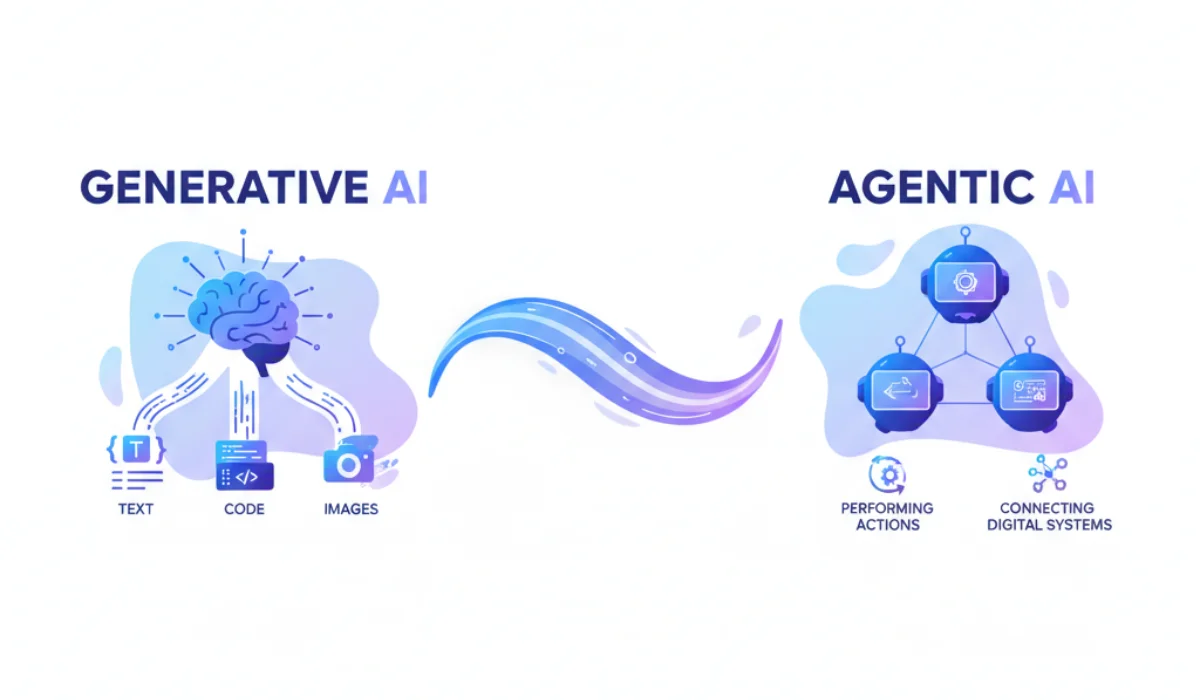
Generative AI is like a talented student who can write essays on any topic. Agentic AI is that same student now managing a full project: gathering research, collaborating with peers, tracking progress, and submitting work, all with minimal supervision.
Here’s what makes Agentic AI a layer above:
- Autonomy: Generative AI outputs content when prompted. Agentic AI can take that output, evaluate it, and decide the next step, for example, testing a hypothesis or refining a model.
- Goal orientation: Instead of responding to single prompts, Agentic AI follows a defined objective. In an education setting, it might continuously improve a personalized learning plan without needing constant input from teachers.
- Integration of reasoning: Agentic AI connects reasoning with creation. It can analyze why a student is struggling, propose a solution, and implement it through adaptive learning tools.
- System coordination: While Generative AI is task-specific, Agentic AI links multiple systems, LMS platforms, analytics dashboards, assessment engines, to act across them seamlessly.
When to Use Generative AI vs Agentic AI
Choosing between generative and agentic AI isn’t about picking sides. It’s about matching capability to intent, whether you need original creation or autonomous execution. Most enterprise scenarios use both, but understanding their core strengths helps you design the right balance of creativity, reasoning, and control.
Generative AI: Creating New Possibilities
Generative AI is designed for expression and exploration. It learns from patterns in vast datasets to create new text, visuals, or code, not by recalling facts, but by predicting what could come next. Think of it as the imagination engine that powers digital creativity.
Where it excels
Marketing content creation
Enterprises use generative AI to draft blogs, whitepapers, social posts, and ad copy. Large language models capture tone, context, and product nuances, allowing teams to scale messaging while maintaining brand voice. Human editors still shape the final narrative, but the first draft time drops dramatically.
Personalized communication
By combining customer data with language models, businesses can craft one-to-one outreach, emails, chatbot replies, and sales scripts that adapt to persona, intent, and past interactions. The system generates the right words, but humans or automation determine when and where to deliver them.
Prototyping and brainstorming
Designers and product teams rely on generative models to visualize early ideals, user flows, mockups, or copy variations. Instead of starting from a blank page, teams begin from a set of AI-generated options, then iterate toward a refined concept.
Creative media generation
In industries like gaming, entertainment, and education, generative AI produces images, voiceovers, and scripts. It lowers the barrier to experimentation, letting small teams produce high-quality media quickly while reserving human judgment for storytelling and ethics.
With the help of Generative AI development services, organizations can rapidly prototype ideas, generate marketing assets, or personalize communication at scale.”
When to Use Agentic AI
Agentic AI adds the missing muscle, reasoning, memory, and the ability to act across systems. It’s suited for tasks that require multi-step logic, data retrieval, and continuous adaptation without constant human prompting.
Where it excels
Workflow automation
Instead of predefined scripts, agentic systems observe triggers and decide the next step. Example: an agent monitors new customer inquiries, classifies intent, drafts responses with a generative model, sends replies, and updates the CRM, all without manual coordination.
Multi-step task execution
In finance or supply-chain operations, an agent can pull data from ERP systems, analyze it, generate reports, and alert stakeholders if thresholds are crossed. Each step builds on the previous one through contextual memory.
Data-driven decision-making
Agentic AI can interpret data, run simulations, and propose or execute actions such as adjusting prices or reallocating resources. This is where reasoning meets automation, the agent doesn’t just describe insights; it operationalizes them.
Research and information retrieval
Knowledge workers use agentic agents to crawl multiple databases, summarize findings, and cite evidence. The agent plans queries, compares results, and delivers synthesized insights, freeing analysts from manual sifting.
Intelligent operations in critical industries
In manufacturing, an agent might oversee production health, predicting downtime, ordering spare parts, or recalibrating schedules. In healthcare, it can assist with patient triage or clinical scheduling while maintaining compliance and audit trails.
Hybrid Scenarios: The Best of Both Worlds
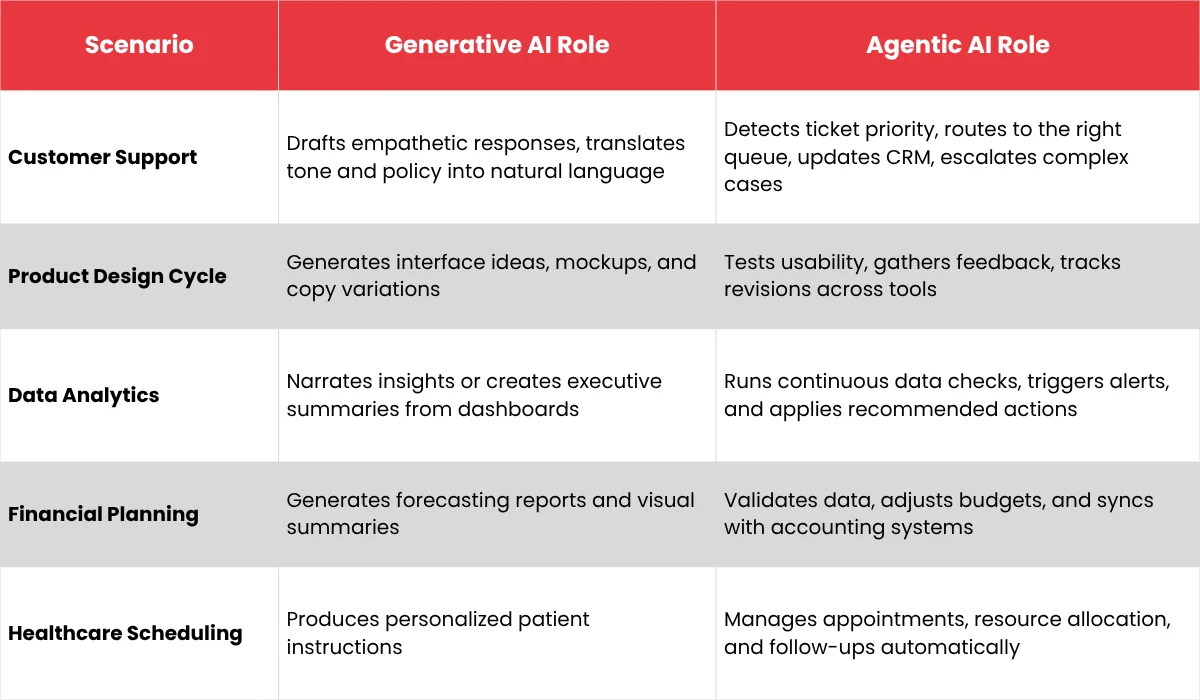
The most powerful applications merge the creative strength of generative AI with the autonomy of agentic AI. Generative AI handles ideation or communication; agentic AI ensures follow-through.
Why hybrid matters
This pairing closes the loop between thinking and doing. As organizations mature, most will build ecosystems where generative models handle creativity and language, while agentic systems manage orchestration and accountability. Together, they turn AI from a content engine into a decision partner.
Also Read: How Proactive AI Agents Will Shape Business Operations?
How to Choose Between Generative and Agentic AI (or Combine Them)
As AI capabilities evolve, the real challenge isn’t deciding whether to use AI, it’s knowing which kind fits your goals. Generative and agentic AI aren’t competing technologies; they represent two levels of capability. One creates. The other acts. The key is to assess your objectives through the lens of complexity, autonomy, data, and governance.
Here’s a framework to guide that choice.
Goal Complexity: Static vs. Dynamic Outcomes
Ask what kind of intelligence your goal demands.
- If your outcome is static like writing a report, generating code snippets, or creating design variations, generative AI is often enough.
- If your outcome is dynamic where the system must plan, execute, and refine results continuously, agentic AI is better suited.
Example:
A generative model can write a marketing email. An agentic AI can analyze campaign performance, select the next audience segment, and schedule the next email automatically.
Level of Autonomy Required
This is the defining factor.
- Low autonomy: You need content or insights that humans will review or approve. → Use generative AI.
- High autonomy: You want a system that can reason, make decisions, and execute tasks end-to-end. → Use agentic AI.
Tip: Most organizations start with semi-autonomous systems, agents that act under guardrails but still learn continuously from human feedback.
Data Sensitivity and Access
The type and security of data also shape your decision.
- Generative AI mostly uses existing datasets or anonymized information. It’s ideal when creative output matters more than real-time data connection.
- Agentic AI needs direct access to operational data, APIs, and sometimes confidential systems. This raises questions about data privacy, authentication, and control.
Example:
Generating a report from public trends is generative. Pulling live data from internal dashboards, analyzing anomalies, and sending alerts is agentic, and demands stricter governance.
Integration Needs: Ecosystem Connectivity
Generative AI operates largely in isolation, you give it a prompt, it gives you output. Agentic AI depends on integration. It connects to CRMs, ERPs, databases, and APIs to take action.
Before moving from generative to agentic, assess:
- What systems must the AI interact with?
- Are APIs available and secure?
- How will you monitor its behavior?
Example:
A generative AI might create a chatbot script; an agentic AI actually runs the chatbot, manages sessions, and learns from live user data.
Risk and Governance Requirements
Agentic AI requires policy frameworks, audit trails, and fallback mechanisms for when the system misfires. Generative AI, on the other hand, poses reputational risks (bias, misinformation) but not operational ones.
Organizations should define:
- Who approves actions taken by AI agents
- How data is logged and reviewed
- What level of human-in-the-loop control remains
Building this governance layer early makes the transition smoother later.
Combining the Two: A Progressive Approach
Start with generative AI to unlock creativity and speed, then integrate agentic systems to scale execution.
Example Pathway:
- Begin with generative tools to produce marketing content or reports.
- Introduce lightweight agents to automate review and publishing workflows.
- Gradually enable agents to run closed-loop tasks like campaign optimization or resource scheduling.
This phased model keeps trust and control intact while evolving toward full autonomy.
The Future of AI Ecosystems
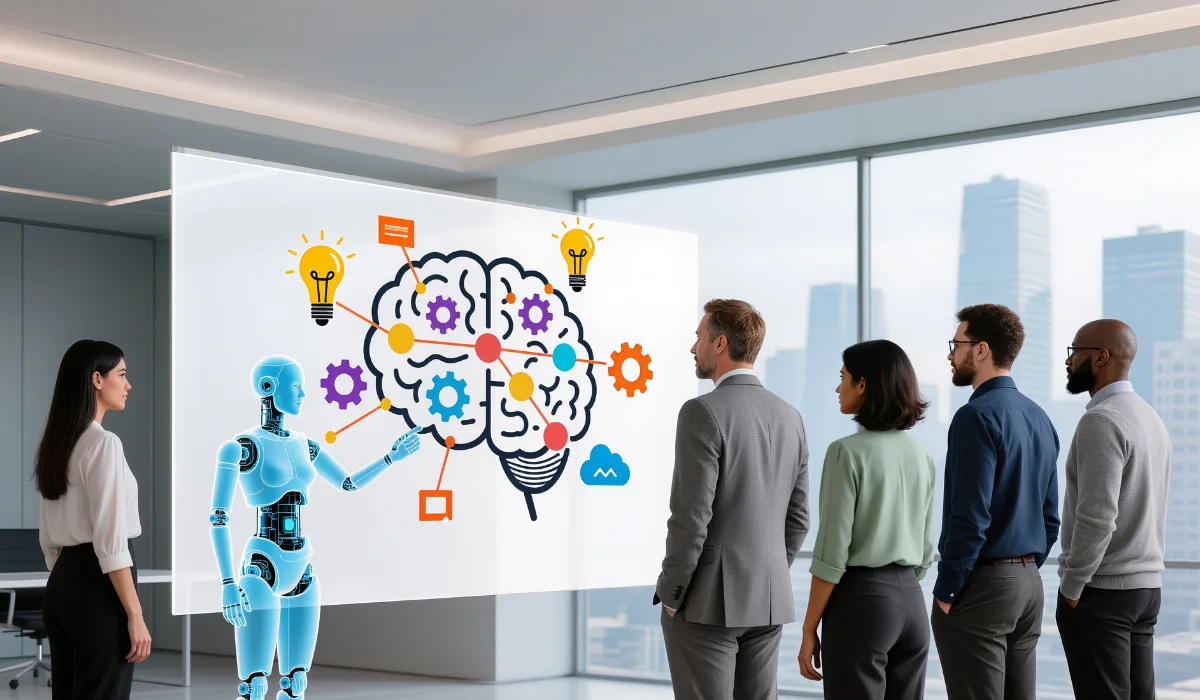
The AI landscape is shifting from isolated tools to connected ecosystems – networks of models, agents, and systems that collaborate rather than compete. Where the last few years were about building smarter models, the next phase is about orchestrating intelligence at scale.
1. Hybrid and Multi-Agent Systems
In the coming decade, AI won’t live inside single apps. It will operate as interacting agents, each specialized for a function, one generating ideas, another validating data, another taking action. These agents will communicate, negotiate, and coordinate toward a shared goal.
In an enterprise context, you might see an ecosystem where:
- A generative model drafts a report.
- A research agent verifies citations.
- A compliance agent checks for policy risks.
- An execution agent formats and publishes the final document.
2. The Rise of AI Orchestration Platforms
As multi-agent environments grow complex, organizations will need orchestration layers : platforms that monitor, manage, and align multiple AI components safely.
These will act as the “control towers” of digital operations, ensuring every AI plays its part without crossing compliance or ethical boundaries.
Early examples are already emerging: orchestration frameworks that let businesses design task flows across LLMs, APIs, and agents. Over time, these will evolve into enterprise-grade AI operating systems capable of managing workloads across the full spectrum of intelligence.
Conclusion
The evolution from generative to agentic AI marks a quiet but fundamental shift, from systems that create possibilities to systems that realize them.
Generative AI gave organizations the ability to express ideas at machine speed, turning language, visuals, and code into immediate, usable output. Agentic AI now extends that power into execution: systems that understand goals, make decisions, and act in the world.
They aren’t replacements for one another, but parts of the same continuum where Generative AI imagines. Agentic AI implements. Together, they close the loop between creativity and consequence.
As AI autonomy scales, the question isn’t how much control we give up, but how thoughtfully we design the collaboration between human intent, machine reasoning, and organizational ethics.
For enterprises, the opportunity lies not just in adopting new models, but in re-architecting processes to let both kinds of intelligence coexist: one thinking, one doing, both accountable.
